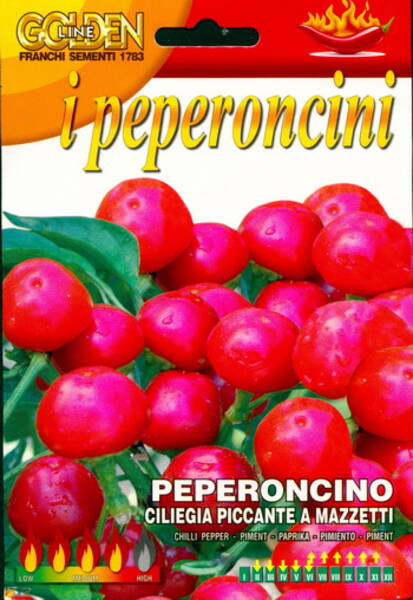Very beautiful, mid-early variety with fruits similar to small tomatoes. The fruits are round, dense, 3-4 cm in diameter, bright red.
The bush is compact, up to 40 cm high (when grown on a window or balcony) and up to 80 cm (when grown in open ground and greenhouses).
They have a pronounced spicy-hot taste, are used fresh, dried and canned. Solid, tasty flesh, ideal for stuffing and preserving.
Bot. syn.: Capsicum annuum var. frutescens (L.) Kuntze, Capsicum fastigiatum Blume, Capsicum minimum Roxb.
* Growing peppers indoors.
Both sweet and hot peppers can be grown indoors. Suitable for this variety are those with a compact bush shape, low light requirements, and also specially designed for these purposes.
In a living room, the area with optimal lighting quality is small. Light, as you know, is the main factor ensuring the development of plants and obtaining a harvest in indoor conditions. Therefore, when choosing a place to grow peppers, you need to take into account that verandas, balconies, window sills, loggias are better lit.
South, south-east and south-west windows are illuminated better and longer. On western, northwestern, northeastern and eastern windows and balconies, the lighting is worse.
If there is a lack of sunlight in the room, artificial lighting can be used. Fluorescent lamps are used as lighting sources at the rate of 120-300 W per m2.
The temperature in residential premises depends on weather conditions, heating method, number of windows and other factors. In autumn, winter and early spring, the temperature near the window is usually 1-2 °C lower than in the rest of the room; on the windowsill, it is 3-4 °C lower. When glass freezes, the temperature can drop by 5-8 °C. You need to remember this.
Plants on the windowsill may also suffer from overheating that occurs near the heating system. To prevent this from happening, screens remove hot air.
Water for irrigation must be settled so that it is heated and enriched with oxygen. Plants are watered with water at room temperature. In cool weather and low room temperature, the water should not be below +15 °C.
Indoor plants are watered as needed. In autumn and winter, you need to be especially careful with watering; water only in the first half of the day. If potted plants are placed near a heating system or in very warm conditions where the soil often dries out, water thoroughly and regularly.
To maintain optimal air humidity (70-80%), place an open container with water, hang a wet cloth, and spray the plants with water.
Doses and timing of fertilizer application depend on the age and condition of the plants. If the room does not have optimal lighting conditions during the winter months, leaves and flowers may fall off. In the fall, after fruiting, the crown of the plants is cut off by 1/3, watering is reduced, maintaining the soil in a semi-moist state. In the spring, the plants are fed, placed closer to the light, and they begin to bloom and bear fruit again. Hot peppers can grow in one place for about 5 years.












